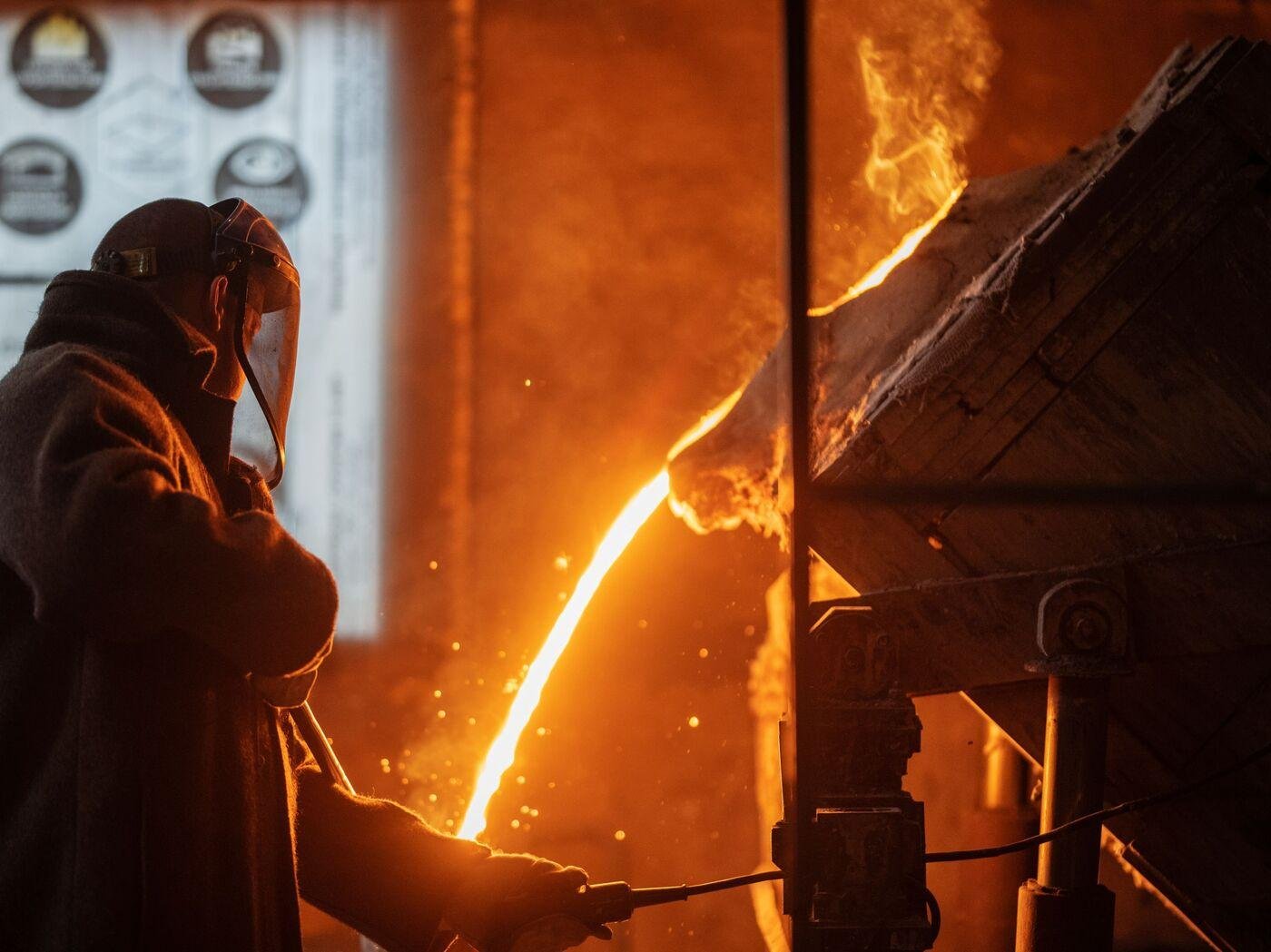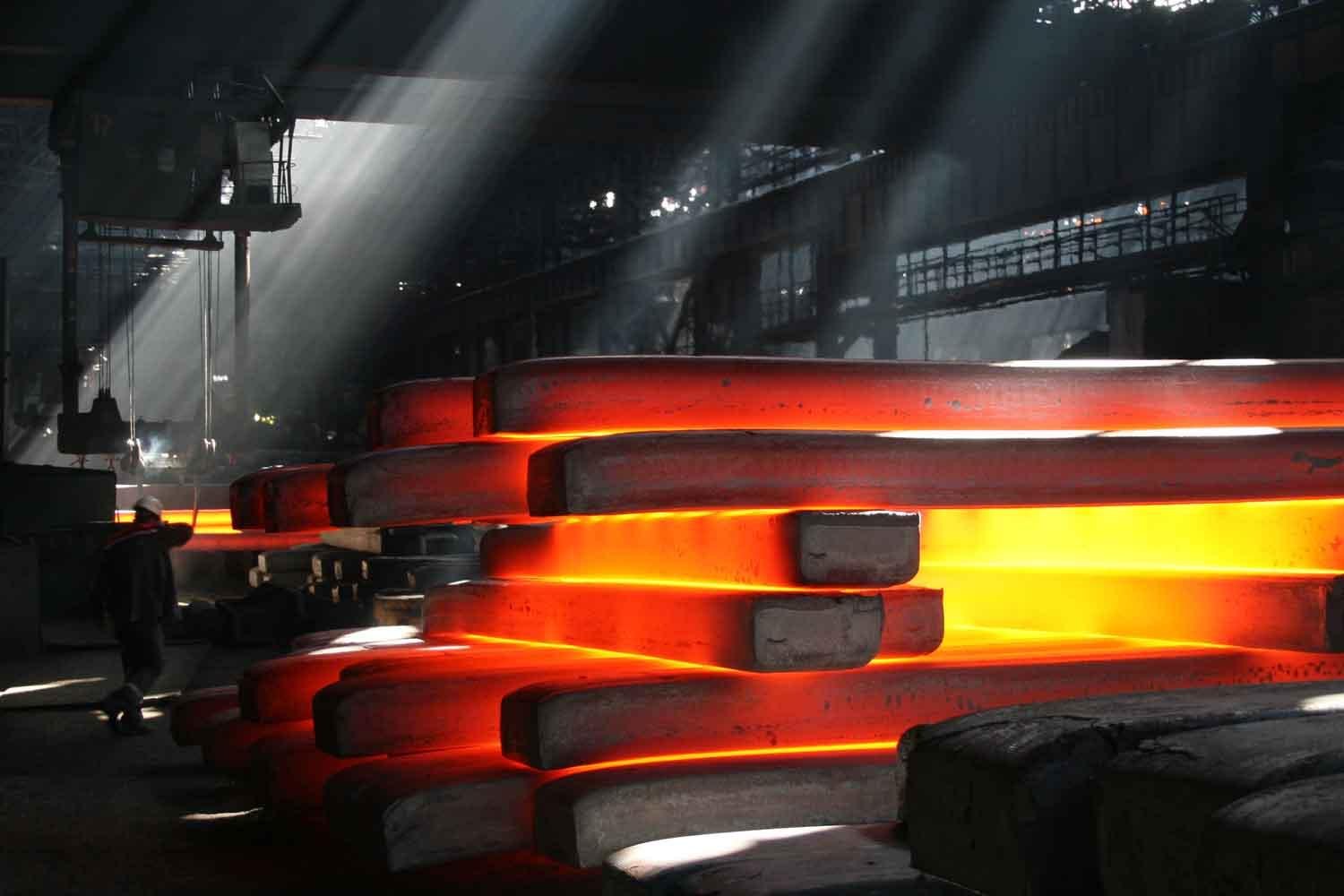Azerbaijani metallurgy in anticipation of full cycle Review by Caliber.Az
One of the most important vectors of Azerbaijan's new industrialization strategy is the creation of a full-cycle metallurgical complex. Due to the lack of iron concentrate production capacities in the country for many years, domestic ferrous metallurgy enterprises were dependent on imports of raw materials and operated using scrap metal. However, the successful activity of the subsidiary of AzerGold CJSC - Daşkəsən Dəmir Filiz LLC (DDF) at the Dashkesan iron ore deposit, the largest in the region, will allow approximately in 2025-2026 to establish the production of the necessary raw materials, followed by its processing into high-quality ore concentrate, which will help create a new production chain in the metallurgical industry of the country.
Historically, despite having the largest iron ore deposits in the South Caucasus, Azerbaijan's metallurgical complex during the Soviet years was mainly processing finished pig iron and steel raw materials coming from metallurgical plants in Russia, Ukraine, Kazakhstan, and even Georgia. In particular, due to the lack of a closed cycle of ferrous metal production in Azerbaijan, the iron ore extracted in Dashkesan as well as fluxes and bentonites were smelted at the Rustavi and Taganrog metallurgical plants, while from the same Rustavi, the republic received iron billets, etc. This complex scheme functioned by fits and starts under the Soviet system of mutual offsets and subsidies for energy and transport services. However, with the transition to market relations after 1991, it turned out to be completely ineffective due to the growth of overhead costs and unprofitable due to a significant difference between the cost of raw materials and the final product - steel.

Unfortunately, even in the post-Soviet period, the development of the metallurgical and ferrous metal processing sector in Azerbaijan has been burdened by a half-hearted and open-ended industry cycle. The main problem faced by domestic steelmaking enterprises is related to the fragmentation of metallurgical enterprises and the lack of a complete production chain for the processing of ore raw materials. The main source of raw materials for steel mills is still recycled ferrous metals. However, the use of recycled metal as a raw material has largely been oriented towards the production of rebars, channels and other products for the construction industry. However, metal for the needs of pipe and structural steel producers still had to be imported from neighbouring countries, not to mention foreign supplies of high quality steel for Azerbaijani metal processing plants (for example, oil and gas engineering) and defence companies.
However, due to the depletion of a large part of the country's scrap resource and the rising cost of imported raw materials, there have been numerous work stoppages and even temporary shutdowns of steelmaking plants in the past. The only way to rid this industrial sector of import dependence and other technological problems is to establish a complete technological chain in domestic metallurgy, in particular by creating facilities to process local ore into iron concentrate, as well as re-equipping metallurgical complexes to handle new raw materials.
Certainly, certain steps have been taken to develop the domestic ferrous metallurgy, including through the commissioning of the Sumgayit Pipe Rolling Plant - Azerboru - at the end of 2017 after reconstruction. A ferroalloy plant "Baku non-ferrous metals and ferroalloys" was built in the territory of Sumgayit chemical-industrial park, metal construction companies were established in other industrial clusters, etc.
However, numerous attempts to privatize the Dashkesan Filizsaflashdirma mining and processing plant and to attract foreign investors to establish on this basis a full metallurgical cycle were unsuccessful. Efforts to create a steelmaking complex covering all stages - from iron ore production to steelmaking - for which the Azerbaijan Steel Industry Complex (APIK) was established in April 2013, all shares of which were owned by the state, have also been unsuccessful. The implementation of the plan was hindered by the global energy crisis of 2014-2017, which resulted in a more than 2.5-fold decline in global steel prices. Consequently, APIK was not able to accumulate the necessary funds to implement the plan during that crisis period.
The subsequent pandemic crisis of 2020-2021, exacerbated by the Russia-Ukraine war that began in 2022 and the energy collapse in the European Union, has also not been good for the prospects of the global metals industry. In recent years, the ferrous metals market has seen a high level of volatility in demand and prices due to trade wars between the US, EU, China and now sanctions pressure on Russia. Thus, given the expected recession in the global economy amid tightening monetary policy by the US Federal Reserve and other global central banks, steel consumption is expected to grow by no more than 1% to 1.814 billion tonnes in 2023. However, this figure could be lower, if we believe the estimates of the international credit rating agency Fitch Ratings, which predicts extremely low demand for steel in the European Union and China, and Asian countries this year.
But on the other hand, countries in the post-Soviet region are facing steel product shortages due to the destruction of Ukraine's steelmaking complex during the war and a significant reduction in production in Russia due to sanctions. Finally, demand for rebar and rolled steel is expected to increase manifold in neighboring Türkiye, where about 24 thousand new residential buildings and other types of real estate are to be built in the near future as a result of a catastrophic earthquake.

There is also a huge demand for various types of steel products in Azerbaijan, which is carrying out large-scale construction work in the liberated territories, not to mention the usual needs of the residential construction sector and the needs of industrial clusters. So in the last year or two, the country has seen a very tangible increase in prices of almost all kinds of imported steel products. Recall that the annual aggregate domestic demand for steel products in Azerbaijan before the crisis was estimated at about $ 1.3 billion, and more than two-thirds of this amount was provided by imports.
Thus, despite fluctuations in world steel prices, the need for a full metallurgical production cycle in the country has not lost relevance. Daşkəsən Dəmir Filiz (DDF) (a subsidiary of government-owned AzerGold), which has successfully carried out appraisal activities on the exploitation of our country's largest iron ore deposits, will solve this problem. In particular, it is about works in the Dashkesan iron-ore section, which includes North-East, North-West, South-East, South-West, Demirov, and Derder deposits. As a result of last year's revaluation of mineral resources, an additional 67.37 million tonnes, totaling 184.97 million tonnes, were added to the former total ore reserves at the Northwest and South-East deposits. For these two deposits, a 21-year exploitation plan has been developed with the help of an international consultant from the UK, Micon International, using modern technology. At the same time, exploration work on five deposits in the Dashkesan iron ore area is continuing with a view to extending the period of exploitation up to 30 years. According to the plan of organization of iron ore mining in 2025-2026, already since last year the works on stripping and movement of the soil to reach the iron rocks have started, as a result, 350 thousand tons of ore have been extracted and stockpiled, and in 2023 the production of 1.66 million tons of ore is expected.
At the same time, work is underway on the DDF initiative to implement a project to build a modern concentrator in the Dashkesan district to produce iron ore concentrate with an iron content of 67%. In particular, it is expected that instead of an obsolete and worn-out ropeway leading to Gushchu village, the concentrate will be transported (flushed with water) by a 45 km long slurry pipeline to Ganja administrative district, where a concentrate processing plant will be built afterwards. In the next stage, the concentrate will be processed into pellets and DRI (Direct Reduced Iron) with an iron content of 95% and HBI (Hot Briquetted Iron).
In the next stages of the complete metallurgical cycle in Azerbaijan, facilities will be created to smelt in electric arc furnaces the highly concentrated raw materials produced in Ganja and produce pipes, rebars, channels, rails, steel wire and other types of profile rolled metal from the obtained steel. The implementation of these initiatives will not only rid the country of very costly imports, but over time, as global demand and prices for rolled steel increase, it will help to orient Azerbaijani steel products towards exports.








